Brussels, this is the city we live in. The capital of Belgium in the heart of Europe and often forgotten by many travellers. We often have friends and families coming to visit for a week-end and we started to have our favourite tour ready for those who wanted to visit Brussels in one day. So come with us to discover our must-sees.
We start our tour in the city center at the central station and take the entrance via the Marchés aux Herbes Square, a lovely little square surrounded by some hotels and a market. You can already see the entrance of the famous Galeries St Hubert which we will visit next.
Royal Galeries of St Hubert and surroundings
The Royal Galeries of St Hubert, in the heart of Brussels, are initiated by the architect Jean-Pierre Cluysenaer in 1830. The works only begun in 1846 but were almost completed in June 1847. Already at the time, a wide audience gathered in the galeries, there were shops, auditoriums, cafés, restaurants, apartments as well as a Theatre and a cinema which were a meeting place for painters and writers such as Victor Hugo.

We leave the galeries through the Rue des Bouchers at the center of the galeries on the right side. The Rue des Bouchers is a colorful narrow alley with many restaurants around. Even though the place is quite beautiful and photogenic, we would not recommend to eat here as restaurants are super touristy and food is not the best.
Turn to the right at the Impasse de la Fidelité where you can pass by the famous Delirium Café on the left side. The bar serves 2004 brands of beer from over 60 countries. You should come back to this place at a later time of the day and try some of the many different Belgian beers.
When you continue the alley, the statue of Jeanneke Pis starts to give you an idea on the famous Manneken Pis. Jeanneke Pis is a 50 cm small bronze statue showing a little girl squatting and peeing. The statue is much more modern than its male counterpart and was commissioned by Denis-Adrien Debrouvie in 1985.
From there, wander around the small and beautiful streets until you arrive at the former Belgian stock exchange. Before arriving at the back of the building, you will observe on the right side, a big church with a beautiful but somehow weird frontage which consists of the frontage of beautiful old merchant houses. The church, called St. Niclas Church, is dedicated to the patron saint of merchants and its origin goes back to the birth of the city, even though it has been entirely rebuilt and restored due to several damages over time.
When arriving on the back of the stock exchange building (Bourse), take the street on the right side in order to go to the front of the building, the Place de la Bourse. You will pass by a little archeological site which can be observed from the street through little windows. The site shows the remains of the Franciscan monastery which was founded in Brussels in 1238.
Arriving in front of the Stock Exchange, you can stand in the middle of a former big boulevard which was closed for cars a couple of years ago. From there, you can admire the view on this beautiful building of neoclassical inspiration which was built in 1873.
The Grand-Place
Let’s now go to the most famous and by far the most beautiful landmark in Brussels, the Grand-Place, which is also one of the most beautiful squares in Europe. To get there, we take the Rue du Beurre filled with chocolate shops and automatically arrive at the breathtaking square with its golden houses.
The biggest and most visible building in the center of the square is the Town Hall, the square’s only medieval building, which was built in stages between 1402 and 1455.
Right on the opposite side of the square, the King’s House will also catch your eye. Originally, the building was built with wood and served as a place to sell bread. During the 15th century, it was replaced by a stone building to host the administrative services of the Duke of Brabant who, thus, called the Building Duke’s house. When he later became King of Spain, the building was renamed King’s house. Today, it hosts the Brussels City Museum.
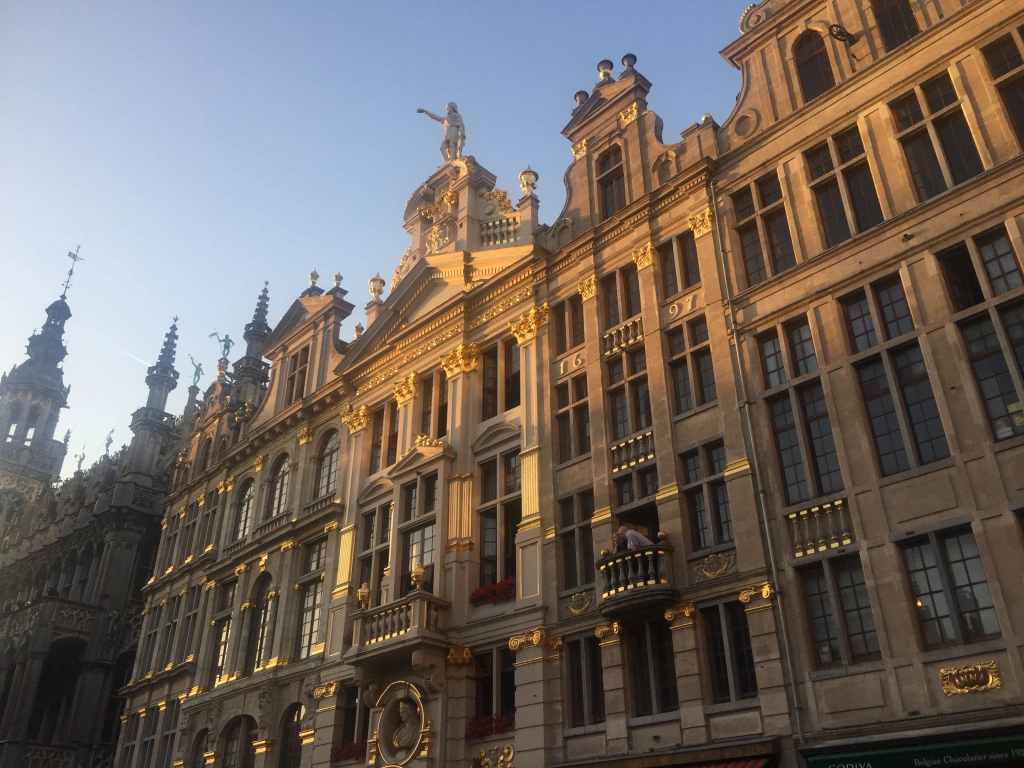
All around the square, a number of guild houses and some private houses with golden ornaments line up and decorate the square. Their architecture is based on Italian baroque with some Flemish influences. The golden ornaments were refreshed just some years ago, so you are lucky to see the place in its full splendour.
Manneken Pis
After an extensive photoshoot at this beautiful place, it is time to visit the second most famous, but slightly less prestigious, site in Brussels – The Manneken Pis.
From the Grand-Place take Rue Charles Buls Street and continue this very touristic road with one souvenir, chocolate and waffle shop next to the other until you arrive at a big crowd of people looking in one corner of the street.

Most people are actually disappointed when seeing this 61 cm bronze statue which shows a naked little boy urinating into the fountain. The statue was put in place in 1618/1619 but its original is kept in the Brussels City Museum in the King’s House at Grand-Place. The statue which can be seen in the street dates back to 1965. However, it still represents the Belgian humour and several times per week Manneken Pis is dressed with different costumes according to the season. His wardrobe of around 1000 different costumes is also exhibited in the City Museum on the Grand-Place.

Mont des arts
We continue our road to Mont des Arts (Hill of the arts), an urban complex home of the Library of Belgium, the National Archives and a public garden. Go up the stairs and enjoy the beautiful view on the roofs of Brussels and the Grand-Place.
After climbing up the hill, you can admire a beautiful building on the left side decorated with musical instruments. Not surprisingly, this is the musical instruments museum which is quite unspectacular in itself but which bar on its top floor offers a great view on the city.
From there, we continue the road to Place Royale, a busy square which hosts all sorts of museums. When you look on the right side, you can see the Palace of Justice of Brussels with its golden dome down the street.
Royal Palace
Turn to the left and immediately to the right to find yourself in front of the Royal Palace which is, still today, the official palace of the King and Queen of the Belgians. This is the place where the king exercises his duties as Head of State, it does not serve as as royal residence, as the royal family lives in the Royal Palace of Laeken outside the city center.

The palace is open for visitors during the summer holidays, usually from end of July to end of August. If you stay in Brussels during this time, we definitely recommend the visit which is free of charge.
EU Quarter
It is now time to discover a much more modern area of Brussels, the EU quarter, which hosts the EU institutions in Brussels. Most of the buildings in the surroundings are from the EU institutions or have a close link to EU legislation (associations, lobbying firms etc.).
Go to the Rue du Luxembourg and discover the view on the European Parliament at the end of the street.

When you arrive on the esplanade of the Parliament building, next to the main entrance, there are stairs which lead you to a public garden just behind the building. This is where you can take some pictures of the flags of all 27 Member States and where you can find the visitor’s entry. During weekdays you can visit the Plenary of the EP with an audioguide.
You can now go through the garden and its small lake to Place Jourdan for lunch. If you feel hungry and you want to try one of the best french fries in Brussels, go to Maison Antoine right in the center of the square. Don’t be afraid of long lines as this is quite normal on every day of the week. After you bought your fries with one of the many belgian sauces and maybe accompanied by a fricadelle spéciale or a poulycroc, you can actually take a seat in almost every bar on the square. This is a great deal as in exchange of buying your drinks in the bar, you can eat your fries in a very comfortable way on one of the many terraces or even inside the bar. Just take care of the signs at the entrance that will show you whether or not fries are allowed. If you are up for a coffee after lunch, we would recommend the OR COFFEE on the corner of the square.
After lunch, we continue our tour through the EU quarter. Not far from where we are, you can see the European Commission’s main building, called Berlaymont. On the opposite site of the street, the buildings of the European Council will catch your eye. The visitor’s center of the Council can be explored during weekdays only. If you come to Brussels on a weekend and you want to know more about the EU institutions, we would recommend the Parlamentarium, the museum of the European Parliament or, if you are more interested in history, the House of European history. Both museums are super interactive and free of charge.
Matongé/ Louise
It is now time to leave the EU quarter and go to another part of the city. On our way to Louise, a very rich area of Brussels with one luxury boutique next to the other, we pass by Matonge, a whole different world. Matonge is the African quarter of Brussels, symbol for its multiculturalism. In the streets, small shops with exotic fruits as well as African and Indian restaurants give you the feeling of travelling in another part of the world. This is what we love so much in Brussels, only a 5 minutes walk from the EU quarter away, you can discover completely different cultures.
Further down the street, we arrive at the metro station Louise. You don’t need to make a big detour in the avenue de la Louise to see another side of Brussels with its luxury shops. You can take the big main street until Place Stéphanie to get a better idea of what we are talking about. Back at the Louise Metro station, you might notice the Palace of Justice that we had spotted earlier today.
The Palace of Justice is the most important Court building in Brussels and was built between 1866 and 1883 by the architect Joseph Poelaert. At the time, it was the largest building in the world and still remains one of the biggest courthouses. Unfortunately, today the building is in permanent renovation and its frontage is therefore covered by the works.
In front of the Palace of Justice a platform is offering a great view on the city. A small glass elevator brings you down to the Marolles district.

Marolles
The Marolles district is a lively neighborhood is Brussels known for its charming streets and its flea market. The origin of the area dates back to the Middle Age when craftsmen settled down in the neighborhood. Later, mainly factory workers resided in the area.
Explore the charming old streets with its antique shops, discover the famous flea-market at Place Jeu de Balle and visit the Church Notre-Dame de la Chapelle (Our Lady of the Chapel) before heading to the next famous area of Brussels, Sablon.
Sablon
Sablon is very similar to Marolles as antiques also play an important role today. However, history shows that in the 16th century most noblemen moved to the Sablon area and by the 17th century it had become the most aristocratic and prosperous area in the city.
The Grand Sablon Square transforms in a market with antique dealers and book sellers every week-end. You can also discover the impressive Church Notre-Dame du Sablon as well as the Egmont Park with its fairy tale atmosphere and Peter Pan Statue.
The Egmont Palace, which is situated just next to its park is a neoclassical building from the 16th century which today holds the Belgian Ministry of Foreign Affairs.
The sablon area is only a 10 minutes walk away from the Central Station . This is the end of this one day tour in Brussels.

Dinner
For typical Belgian Food you can have dinner at the Fin de Siècle restaurant in the city center where you can try the authentic Stoemp (mashed potatoes and other vegetables), Flemish Carbonnade (beef stew made in Beer), Lapin à la Kriek (Rabbit in a cherry Beer sauce) or a Jambonneau.
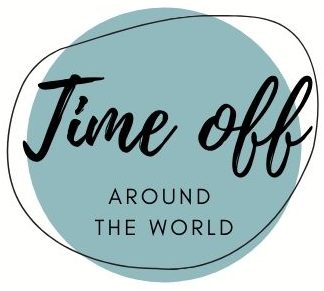
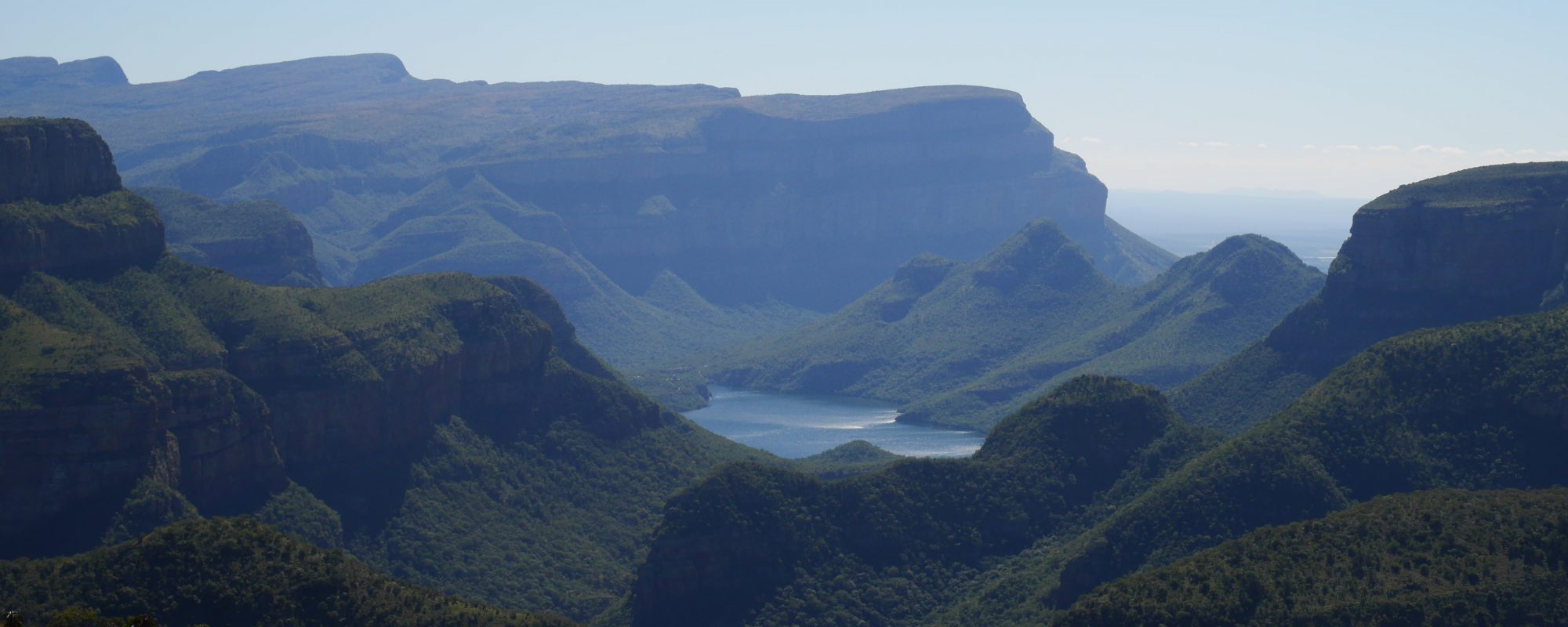
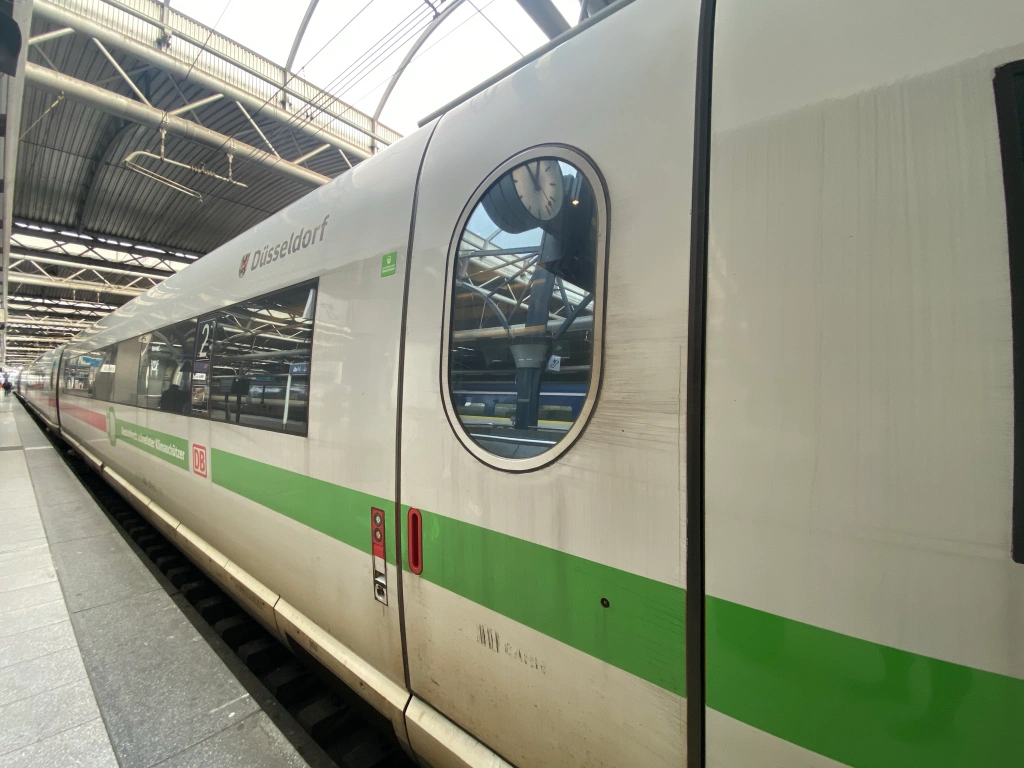
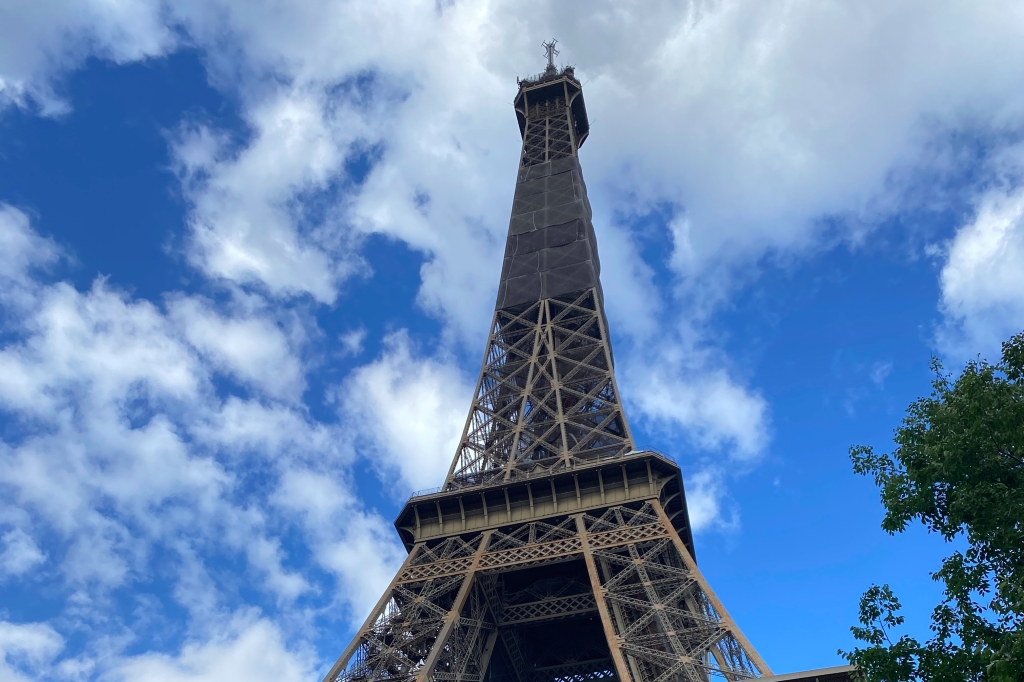
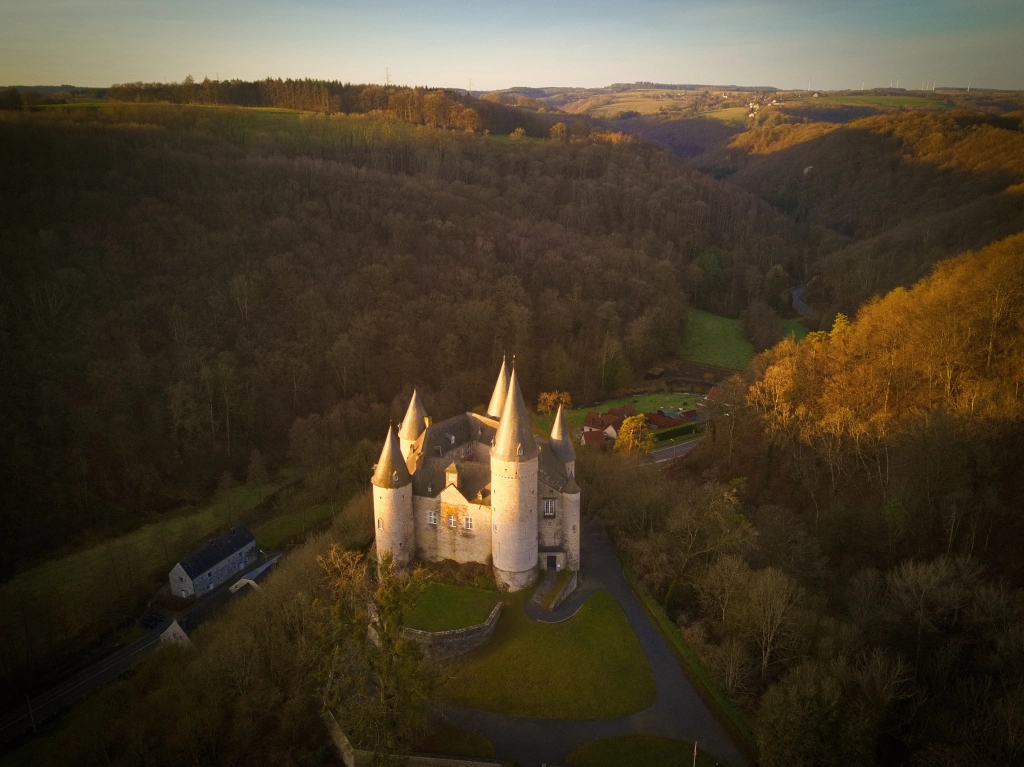
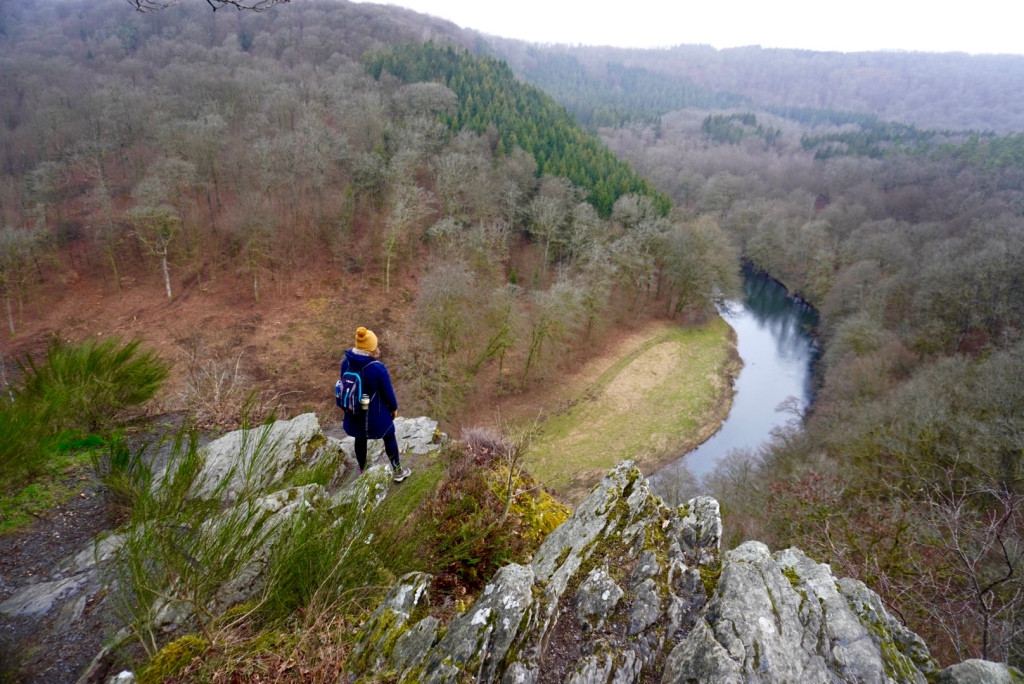

One thought on “Tour guide: Brussels in one day for first-time visitors”